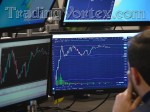Table Of Contents:
- Introduction
- Market Sentiment Indicators:
- News Analysis Tools for Market Sentiment:
- Social Media Trends and Market Sentiment:
- Combining Different Tools for Accurate Market Sentiment Analysis:
- Advanced Techniques for Gauging Market Sentiment:
- Practical Tips for Investors and Traders:
- Conclusion – Mastering Market Sentiment: Tools, Techniques, and Future Insights.
- FAQs on Market Sentiment Analysis:
Introduction
Welcome to the world of trading, where numbers tell stories, and every price movement is a chapter in the grand market narrative. Whether you're a seasoned investor or just starting your journey, understanding market sentiment can be your secret weapon. It's like having a sixth sense in the chaotic world of financial markets. But what exactly is market sentiment, and why should you care?
Understanding Market Sentiment – A Key to Trading Success:
For me, one of the first lessons I learned in trading was that numbers on a chart aren't just figures; they reflect the emotions and decisions of countless individuals. When I started, I was glued to price charts and economic reports. It took a few costly mistakes to realize that I was missing a crucial piece of the puzzle: the human element. Understanding whether the market is optimistic, fearful, greedy, or cautious can provide insights that traditional analysis might miss.
Importance of Gauging Market Sentiment for Investors and Traders:
Why is market sentiment so crucial? Because it can help you make more informed decisions. Think of it like surfing. You need to know not just the size of the waves (the data) but also how they are forming and what other surfers are doing (the sentiment). Getting a feel for the market's mood can help you anticipate its next move and position yourself accordingly.
I've seen traders make brilliant decisions based purely on understanding market sentiment. One of my colleagues, for example, used to track social media chatter around certain stocks. He'd gauge the excitement or panic and make his moves before the mainstream news caught on. It wasn't foolproof, but it gave him an edge.
For long-term investors, sentiment analysis can help identify when a stock is oversold due to panic or overbought due to hype, presenting potential buying or selling opportunities. It's about adding another tool to your kit – one that helps you see beyond the surface.
In the following sections, we’ll dive into various tools and techniques to help you gauge market sentiment. From sentiment indicators and news analysis to social media trends, we'll explore how to harness this knowledge to improve your trading strategy. By the end of this guide, you'll not only understand market sentiment but also be equipped to use it to your advantage. So, let's get started and take your trading game to the next level!
Market Sentiment Indicators:
Alright, let's dive into the fascinating world of market sentiment indicators. Think of these as the mood rings of the stock market, reflecting the collective emotions and attitudes of traders and investors. Understanding these indicators can give you a significant edge, helping you anticipate market movements and make more informed decisions.
Overview of Market Sentiment Indicators:
When I first started trading, I used to focus solely on technical and fundamental analysis. But I quickly realized I was missing out on a crucial aspect: how people felt about the market. Sentiment indicators helped me fill that gap. They became my way of reading the market's pulse, allowing me to see beyond the data and understand the emotions driving market movements.
Popular Sentiment Indicators – An In-Depth Look:
Let's explore some of the most popular sentiment indicators that can help you get a better read on the market. Each of these has its unique way of capturing investor sentiment, and together, they provide a comprehensive view of market mood.
Bullish vs Bearish Sentiment Indicators:
I remember a time when bullish sentiment was through the roof during a tech boom. Everyone was buying tech stocks, convinced they would keep going up. However, the overly bullish sentiment was a warning sign that the market was becoming overheated. Sure enough, a correction followed. Understanding this balance can help you avoid getting caught up in the crowd.
Fear and Greed Index:
There was a period when the Fear and Greed Index was at extreme greed levels, and it was tempting to jump on the bandwagon. But remembering the old adage, "Be fearful when others are greedy," I decided to be cautious. Sure enough, a market pullback occurred shortly after. This index is a great tool to check your own emotions against the market's.
Put/Call Ratio:
I've found the Put/Call Ratio to be particularly useful during earnings seasons. For example, if the ratio spikes ahead of a company's earnings report, it can indicate that investors are nervous about the results. It doesn't always predict the outcome, but it helps gauge market expectations and potential volatility.
Volatility Index (VIX):
I remember trading during a time of geopolitical tension, and the VIX was spiking. This indicator helped me understand that the market was bracing for potential volatility. It prompted me to adjust my strategy, focusing more on risk management and less on aggressive trades.
Advance-Decline Line:
During a market rally a few years ago, I noticed the A/D Line was diverging from the major indices. While the indices were hitting new highs, the A/D Line was flatlining. This divergence signaled that fewer stocks were driving the market higher, suggesting the rally might not be sustainable. And sure enough, the market corrected soon after.
These sentiment indicators are invaluable tools in a trader's arsenal. They help you understand the underlying emotions driving market movements, allowing you to make more informed decisions. By incorporating these indicators into your trading strategy, you can better navigate the often turbulent waters of the financial markets. So, let's move on and explore how news analysis tools can further enhance your understanding of market sentiment.
News Analysis Tools for Market Sentiment:
Let's dive into one of the most dynamic aspects of gauging market sentiment: news analysis. In our fast-paced world, news can be a game-changer, making or breaking markets in an instant. Understanding how to analyze news effectively can give you a significant edge in your trading endeavors.
How News Impacts Market Sentiment:
I remember the first time I got caught off guard by a major news event. It was a surprise rate hike by the Federal Reserve. The market reacted violently, and I watched in real-time as the sentiment shifted from bullish to bearish within minutes. That experience taught me the importance of staying informed and being able to quickly interpret news to gauge market sentiment.
Tools for News Analysis:
To keep up with the fast-moving world of financial news, you need the right tools. Here are some of the best free resources that can help you stay ahead of the curve.
Real-Time News Feeds:
Real-time news feeds are essential for any serious trader. These services provide instant updates on market-moving news, ensuring you’re always in the loop. Here are some reliable and free real-time news feeds:
- Google News - Aggregates news from various sources, allowing you to customize your feed with specific topics like "stock market" or "financial news".
- Yahoo Finance - Offers real-time news updates along with financial data and market information.
- Investing.com - Provides real-time financial news, analysis, and data.
We have created for you the ultimate news and analysis source that scours the entire web for the latest news, analysis, reviews, signals and forecasts from every known source: related to Forex, Stocks, to Crypto, etc., and brings them to you in one place.
Using these tools, I've often caught wind of crucial developments before they became common knowledge. For example, during a merger announcement, having access to real-time news allowed me to react swiftly and capitalize on the market's initial movements.
Financial News Websites:
Financial news websites are great for in-depth analysis and broader market insights. Here are some top free financial news websites:
- CNBC - Delivers up-to-date financial news and analysis.
- MarketWatch - Offers comprehensive coverage of stock market news, analysis, and data.
- The Wall Street Journal - Provides some free articles and updates, but many features are behind a paywall.
Back when I was getting started, I used to spend my mornings with a cup of coffee and MarketWatch open on my laptop. The detailed articles and analysis helped me understand not just the what, but the why behind market movements. This deeper understanding is crucial for developing a nuanced view of market sentiment.
Automated News Sentiment Analysis:
Automated news sentiment analysis tools have become a powerful resource for traders. While many advanced tools are paid, there are some free options available:
- StockTwits - A social media platform for investors and traders that provides sentiment analysis based on user posts.
- TradingView - Offers some sentiment analysis features along with its charting tools and community discussions.
- Finviz - Provides a free news feed with sentiment tagging.
I started using automated sentiment analysis tools when I realized that my manual news tracking couldn't keep up with the sheer volume of information. These tools helped me spot patterns and shifts in sentiment much faster. For instance, during the early days of the COVID-19 pandemic, automated tools alerted me to the rising negative sentiment before the market took a significant downturn, allowing me to adjust my positions accordingly.
Conclusion:
Staying on top of news and understanding its impact on market sentiment is essential for any trader. Whether it's real-time news feeds for instant updates, financial news websites for in-depth analysis, or automated tools for sentiment analysis, having the right resources can make a huge difference. By leveraging these tools, you can better navigate the complex and often turbulent waters of the financial markets, making more informed and timely trading decisions. So, let's continue our journey and explore how social media trends can further enhance your market sentiment analysis.
Social Media Trends and Market Sentiment:
Let's talk about one of the most modern and dynamic ways to gauge market sentiment: social media trends. In today's digital age, social media platforms have become powerful tools for understanding how the market feels and where it's headed. Traders and investors alike can no longer afford to ignore the influence of platforms like Twitter, Reddit, and others on market movements.
The Role of Social Media in Shaping Market Sentiment:
I remember when the "meme stock" phenomenon took off in early 2021. Stocks like GameStop and AMC saw massive price swings, driven primarily by discussions on platforms like Reddit's WallStreetBets. The collective power of retail investors sharing ideas and strategies online was enough to challenge major institutional players. This was a wake-up call for many of us in the trading world, highlighting the importance of monitoring social media trends.
Social media can be a double-edged sword, though. On one hand, it provides real-time insights into market sentiment. On the other hand, it can be a breeding ground for rumors and misinformation. The key is to sift through the noise and focus on credible and significant trends.
Tools for Analyzing Social Media Trends:
To effectively harness the power of social media for market sentiment analysis, you'll need the right tools. Here are some of the best free resources to help you stay on top of social media trends and their impact on the market.
Twitter Sentiment Analysis:
Twitter is a goldmine for real-time market sentiment. Traders, investors, and even companies use Twitter to share news, opinions, and analyses. To keep track of relevant tweets and trends, consider using these tools:
- TweetDeck - A powerful tool for monitoring multiple Twitter feeds in real-time. You can create custom columns to track specific hashtags, users, or keywords.
- Twitter Advanced Search - Allows you to filter tweets by date, hashtag, user, and more. This is useful for tracking sentiment around specific events or stocks.
I've found Twitter particularly useful during earnings season. Following company accounts, analysts, and financial news outlets on Twitter can give you instant updates and a pulse on market sentiment before, during, and after earnings reports.
Reddit and Stock Market Discussion Forums:
Reddit, especially the WallStreetBets community, has become a significant player in the market sentiment game. But it's not just about WallStreetBets; there are numerous subreddits dedicated to stock market discussions that can provide valuable insights:
- Reddit - Use subreddits like r/WallStreetBets, r/investing, and r/stocks to gauge sentiment and discover trending topics. You can search for specific stocks or keywords to see what the community is saying.
- StockTwits - Although not Reddit, StockTwits operates similarly by allowing traders and investors to share ideas and sentiment in real-time.
I've seen first-hand how discussions on these forums can drive market movements. For example, during the GameStop surge, being aware of the chatter on WallStreetBets allowed me to anticipate and react to the volatility.
Social Media Sentiment Tracking Tools:
To get a broader and more systematic view of social media sentiment, consider using sentiment tracking tools. These tools analyze social media posts and provide aggregated sentiment scores and trends:
- Social Searcher - A free social media search engine that provides sentiment analysis for various social platforms.
- Hootsuite - While primarily a social media management tool, Hootsuite offers features for tracking social media trends and sentiment.
- BuzzSumo - Provides insights into trending topics and influencers, along with some sentiment analysis features.
Using these tools, I've been able to spot emerging trends and shifts in sentiment before they fully manifest in the market. For instance, during a major tech product launch, sentiment tracking tools helped me gauge the initial public reaction, which often correlates with stock price movements.
Conclusion:
Social media is an invaluable resource for gauging market sentiment. By leveraging platforms like Twitter (X.com) and Reddit, and using sentiment tracking tools, you can gain real-time insights into how investors and traders feel about the market. This can help you make more informed decisions and stay ahead of the curve. Remember, the key is to filter out the noise and focus on credible and significant trends. Let's continue exploring how to combine all these tools and techniques to refine our market sentiment analysis.
Combining Different Tools for Accurate Market Sentiment Analysis:
As we venture deeper into the world of market sentiment analysis, it's essential to recognize that no single tool or method can give you a complete picture. The real magic happens when you combine different tools and techniques to get a more accurate and holistic view of market sentiment. Let’s explore how integrating sentiment indicators, news analysis, and social media trends can enhance your trading strategy.
Integrating Sentiment Indicators, News Analysis, and Social Media Trends:
Imagine you're trying to piece together a puzzle. Each tool – be it sentiment indicators, news analysis, or social media trends – provides a different piece. Only by putting them together can you see the full picture.
Sentiment Indicators:
Start with sentiment indicators like the Fear and Greed Index or the Volatility Index (VIX). These indicators give you a broad sense of the market's emotional state. Are investors feeling greedy and driving prices up, or is fear causing a sell-off? These indicators are your baseline, giving you a general mood of the market.
News Analysis:
Next, layer in news analysis. Tools like Google News, Yahoo Finance, Investing.com, or our all-in-one news and analysis feeds provide real-time updates on market-moving events. During an earnings season, for example, sentiment indicators might show high levels of fear. By reading the news, you can understand if this fear is justified by poor earnings reports or if it's an overreaction. This context is crucial.
Social Media Trends:
Finally, sprinkle in insights from social media. Platforms like Twitter (X.com) and Reddit can give you a ground-level view of what individual traders and investors are thinking and feeling. Social media sentiment tools like Social Searcher and BuzzSumo can help you track trends and sentiment in real time.
Case Studies – Successful Use of Combined Sentiment Analysis Tools:
Let me share a couple of personal anecdotes to illustrate how combining these tools can lead to successful trades.
Case Study 1 – The Tech Stock Rally:
By combining these insights, I felt confident in riding the tech rally. The sentiment indicators told me the market was bullish, the news confirmed the fundamental strength, and social media trends indicated widespread retail investor enthusiasm. It was a perfect storm that led to some of my most profitable trades that year.
Case Study 2 – The Oil Price Crash:
In this case, the combined tools painted a bleak picture. By recognizing the deep-rooted issues reflected across all three sources, I decided to stay out of oil stocks, avoiding significant losses as prices continued to fall.
Best Practices for Gauging Market Sentiment:
Here are some best practices I've picked up over the years for effectively gauging market sentiment:
- Stay Informed and Flexible: The market sentiment can shift quickly, so it's crucial to stay informed. Regularly check your sentiment indicators, keep up with the latest news, and monitor social media trends. Flexibility is key; be ready to adjust your strategies as new information comes in.
- Use Multiple Sources: Don't rely on just one source or type of tool. Diversify your information streams to get a well-rounded view of the market. This reduces the risk of being blindsided by unexpected events or shifts in sentiment.
- Context Matters: Always consider the context of the sentiment. High levels of fear might indicate a buying opportunity if you believe the market is overreacting. Conversely, extreme greed might be a signal to take profits if you think the market is becoming overheated.
- Filter the Noise: Especially on social media, it's essential to filter out the noise. Focus on credible sources and significant trends rather than getting caught up in every rumor or speculative post. This helps in maintaining a clear and objective view of market sentiment.
Conclusion:
Combining different tools for market sentiment analysis isn't just a good practice – it's a necessity in today's complex trading environment. By integrating sentiment indicators, news analysis, and social media trends, you can gain a deeper, more nuanced understanding of the market. This approach not only helps in making informed decisions but also in staying ahead of market movements. Remember, trading isn't just about following the data – it's about interpreting it, understanding the context, and making informed decisions.
Advanced Techniques for Gauging Market Sentiment:
As we journey deeper into the world of market sentiment analysis, it's time to explore the cutting-edge techniques that are transforming the landscape. From machine learning and AI to sophisticated sentiment analysis algorithms, these advanced methods offer powerful insights that can elevate your trading strategy. Let's dive into the future of market sentiment analysis with a blend of expertise, personal anecdotes, and a touch of humor.
Machine Learning and AI in Market Sentiment Analysis:
Machine learning and AI are the rockstars of the modern trading world. These technologies sift through vast amounts of data at lightning speed, identifying patterns and trends that human eyes might miss. Imagine having a supercharged assistant that never sleeps, continuously analyzing market sentiment for you.
I remember the first time I used a machine learning model to analyze sentiment. It felt like stepping into the future. The model could process thousands of news articles, tweets, and forum posts in minutes, giving me a comprehensive sentiment snapshot. It's like having a crystal ball, only more accurate and less mystical.
How AI Enhances Sentiment Analysis?
For instance, during a volatile market period, an AI model can identify subtle shifts in sentiment that precede major price movements. This early warning system can be a game-changer, helping you stay ahead of the curve and make informed trades before the rest of the market catches on.
Sentiment Analysis Algorithms – How They Work?
Text Processing and Feature Extraction:
For example, an algorithm might identify phrases like "market crash" or "soaring profits" and assign sentiment scores accordingly. This process, known as feature extraction, is crucial for transforming raw text into meaningful sentiment indicators.
Machine Learning Models:
I once used a machine learning model trained on financial news to analyze market sentiment around a major corporate merger. The model not only identified the overall sentiment but also detected shifts in sentiment over time, providing a dynamic view of market reactions. This level of detail is invaluable for making strategic trading decisions.
Predictive Analytics in Trading – A Future Perspective:
Predictive analytics takes sentiment analysis to the next level, using historical data and advanced algorithms to forecast future market trends. This forward-looking approach can give traders a significant edge, helping to anticipate market movements and adjust strategies accordingly.
The Power of Prediction:
During the early days of the COVID-19 pandemic, predictive analytics models were instrumental in forecasting the market's reaction to unfolding events. By analyzing sentiment around news about the virus's spread and economic impact, these models provided early warnings of market downturns, allowing traders to take protective measures.
Integrating Predictive Analytics into Your Trading Strategy:
To fully harness the power of predictive analytics, it's essential to integrate these insights into your overall trading strategy. This might involve using predictive models to inform entry and exit points, adjusting risk management tactics based on predicted volatility, or identifying emerging market opportunities before they become mainstream.
For example, you might use a predictive model to identify sectors poised for growth based on positive sentiment trends. By investing early in these sectors, you can capitalize on emerging trends and maximize returns.
Conclusion:
Advanced techniques for gauging market sentiment, from machine learning and AI to sophisticated sentiment analysis algorithms and predictive analytics, are transforming the way we trade. These tools provide powerful insights that can help you stay ahead of the market, make informed decisions, and optimize your trading strategy. Embracing these advanced methods isn't just about keeping up with the times – it's about staying ahead of them. Let's continue exploring and innovating, leveraging the best of technology to refine our market sentiment analysis and trading strategies.
Practical Tips for Investors and Traders:
Navigating the world of trading isn't just about crunching numbers; it's about understanding human behavior and sentiment. Here are some practical tips to help you harness the power of market sentiment analysis and enhance your trading strategy.
How to Incorporate Sentiment Analysis into Your Trading Strategy?
Market sentiment analysis can be a game-changer if used correctly. Here’s how you can integrate it into your trading approach:
- Start with the Basics: Begin by familiarizing yourself with sentiment indicators like the Fear and Greed Index or the Put/Call Ratio. These indicators provide a snapshot of market sentiment at any given time. Understanding whether investors are feeling bullish or bearish can influence your trading decisions.
- Combine Different Tools: Don’t rely on just one source of sentiment data. Integrate sentiment indicators, news analysis, and social media trends to get a comprehensive view. For example, if sentiment indicators show extreme fear, but news and social media sentiment are positive, it might indicate a buying opportunity.
- Use Technology Wisely: Take advantage of technology tools like sentiment analysis algorithms and social media sentiment trackers. Tools such as TweetDeck for Twitter or StockTwits for real-time discussions can provide valuable insights into market sentiment trends.
- Stay Objective: It's easy to get caught up in the hype or panic of the crowd. Maintain objectivity and use sentiment analysis as one part of your decision-making process. Combine it with fundamental and technical analysis to validate your trading ideas.
Common Mistakes to Avoid When Gauging Market Sentiment:
Understanding market sentiment comes with its pitfalls. Here are some common mistakes to steer clear of:
- Over-Reliance on Social Media: While social media can provide real-time sentiment data, it's important to filter out noise and focus on credible sources. Avoid making trading decisions based solely on viral posts or speculative discussions.
- Ignoring Contrary Signals: Sometimes, sentiment indicators may show extreme optimism or pessimism, but other factors indicate a different market reality. Be cautious of ignoring contrary signals from news or economic data that contradict prevailing sentiment.
- Neglecting Long-Term Trends: Market sentiment can shift rapidly, but long-term trends often provide a clearer picture of market direction. Don't base your entire strategy on short-term sentiment fluctuations without considering broader market trends.
- Failing to Adapt: Market sentiment is dynamic. Stay flexible and adapt your strategy as sentiment changes. What works today may not work tomorrow, so continuously evaluate and adjust your approach based on evolving market conditions.
Investing in your knowledge pays off in trading. By expanding your understanding of market sentiment and staying informed, you can sharpen your trading skills and make more confident decisions.
Conclusion
Incorporating market sentiment analysis into your trading strategy isn't just about following the crowd – it's about understanding why the crowd is moving and how sentiment influences market dynamics. By leveraging tools, avoiding common pitfalls, and continuously learning, you can navigate market sentiment with greater confidence and enhance your overall trading success. Remember, the best traders aren't just number-crunchers; they're astute observers of human behavior in the markets.
Conclusion – Mastering Market Sentiment: Tools, Techniques, and Future Insights.
As we wrap up our exploration into gauging market sentiment, it’s clear that understanding the emotional pulse of the market is not just beneficial – it's essential for successful trading. Throughout this journey, we've delved into various tools and techniques that can help you decipher market sentiment with precision and finesse. Let's take a moment to recap what we've learned and peek into the future of market sentiment analysis.
Recap of Tools and Techniques for Gauging Market Sentiment:
We started by exploring traditional sentiment indicators such as the Fear and Greed Index and the Volatility Index (VIX), which provide a broad gauge of market sentiment based on investor emotions. These indicators serve as foundational tools, offering insights into whether the market is leaning towards fear or greed, caution or optimism.
Moving forward, we dived into the realm of news analysis, where real-time updates and financial news websites play a pivotal role. Understanding how news events influence sentiment allows traders to anticipate market movements and react swiftly to changing dynamics.
Social media emerged as another powerful frontier for gauging market sentiment. Platforms like Twitter and Reddit provide real-time discussions and sentiments from individual traders, offering a grassroots perspective that complements traditional indicators and news analysis.
We then explored advanced techniques such as machine learning and AI-driven sentiment analysis. These technologies bring predictive capabilities to the forefront, enabling traders to forecast market trends based on historical data and evolving sentiment patterns.
The Future of Market Sentiment Analysis in Trading:
Looking ahead, the future of market sentiment analysis holds exciting prospects. Rapid advancements in technology will continue to refine sentiment analysis tools, making them more sophisticated and accessible. Machine learning models will become even better at predicting market movements, empowering traders with deeper insights and foresight.
Moreover, the integration of big data and sentiment analysis promises to unveil new dimensions of market behavior. By harnessing vast amounts of data – from social media sentiments to global economic indicators – traders can gain a holistic understanding of market sentiment on a scale never before imagined.
Encouragement for Continuous Learning and Adaptation in Trading:
As we conclude, I encourage you to embrace a mindset of continuous learning and adaptation in your trading journey. The markets are dynamic, influenced by a myriad of factors including sentiment, economics, and geopolitical events. By staying curious and informed, you position yourself not just as a trader, but as a strategist who navigates the complexities of market sentiment with agility and insight.
Remember, each trade is a learning opportunity. Whether you're refining your use of sentiment indicators, exploring new AI-driven tools, or honing your ability to interpret social media trends, every step forward enhances your ability to make informed decisions and achieve your trading goals.
Embrace the Journey:
In closing, mastering market sentiment is not merely about predicting prices; it's about understanding the collective psyche of the market participants. It's about recognizing that behind every price movement lies a story of human emotion – fear, greed, optimism, and caution – that shapes market dynamics.
So, embrace the journey of gauging market sentiment. Equip yourself with the tools and techniques discussed here, stay attuned to emerging trends, and trust in your ability to navigate the ever-changing landscape of the financial markets. By doing so, you empower yourself to not only survive but thrive in the world of trading.
Happy trading, and may your strategies be guided by wisdom, informed by knowledge, and enriched by the insights of market sentiment analysis.
FAQs on Market Sentiment Analysis:
Curious about market sentiment analysis? Let's dive into some frequently asked questions to demystify this essential aspect of trading.
Market sentiment refers to the overall attitude or feeling of investors and traders towards a particular asset or the market as a whole. It reflects the collective emotion – fear, greed, optimism, pessimism – that influences buying and selling decisions. Understanding market sentiment is crucial because it helps traders anticipate market movements and identify potential trading opportunities. By gauging sentiment, traders can align their strategies with prevailing market trends and mitigate risks.
Sentiment indicators provide valuable insights into market sentiment, but their accuracy can vary depending on several factors. Factors influencing accuracy include the quality and reliability of data sources, the methodology used to calculate the indicator, and the current market conditions. While sentiment indicators like the Fear and Greed Index or the Put/Call Ratio can provide a general sense of market sentiment, they should be used in conjunction with other tools and analysis techniques for a more comprehensive view.
Sentiment analysis can offer clues about potential market movements, but it's essential to understand its limitations. Sentiment indicators and analysis tools can identify shifts in investor sentiment and emotional biases that may precede market movements. However, market dynamics are influenced by numerous factors, including economic data, geopolitical events, and unexpected news. Therefore, while sentiment analysis can be a useful predictive tool, it should be part of a broader trading strategy that incorporates fundamental and technical analysis.
The best tools for market sentiment analysis vary depending on your trading style and preferences. Here are some popular tools and techniques:
- Sentiment Indicators: Such as the Fear and Greed Index, VIX, and Put/Call Ratio.
- News Analysis Tools: Real-time financial news feeds, financial websites, and automated news sentiment analysis tools.
- Social Media Monitoring: Platforms like Twitter, Reddit, and specialized sentiment tracking tools.
- Advanced Technologies: Including machine learning and AI-driven sentiment analysis algorithms.
The effectiveness of these tools depends on how well they integrate with your trading strategy and the quality of the data they analyze. Experimenting with different tools and combining their insights can enhance your ability to gauge market sentiment accurately.
Integrating market sentiment analysis into your trading strategy involves several steps:
- Monitor Multiple Sources: Use a combination of sentiment indicators, news analysis, and social media trends to get a comprehensive view of market sentiment.
- Validate with Other Analysis: Confirm sentiment signals with fundamental analysis (economic data, company earnings) and technical analysis (chart patterns, indicators).
- Stay Informed: Stay updated on market developments and be prepared to adjust your strategy based on evolving sentiment and market conditions.
- Practice Risk Management: Manage your risk exposure by considering sentiment-driven volatility and potential market reactions.
By integrating these steps into your trading routine, you can leverage market sentiment analysis to make more informed decisions and improve your overall trading performance.
In Conclusion, market sentiment analysis is both an art and a science. It involves interpreting human emotions and behavioral patterns within the financial markets. By mastering the tools and techniques discussed here, you can gain a deeper understanding of market sentiment and its impact on trading dynamics. Remember, while sentiment analysis provides valuable insights, it should be part of a comprehensive trading strategy that includes diverse sources of information and rigorous analysis. Embrace curiosity, stay adaptable, and continue learning – these are the keys to navigating the complexities of market sentiment with confidence. Happy trading! 🍀





































